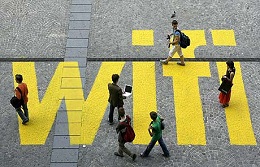Delegates at this year’s Mobile World Congress generated more than 19.1 terabytes of traffic through the venue’s Wi-Fi network, which was one of the first large scale deployments of Hotspot 2.0 technology.
Figures released this morning show that almost 81,000 devices connected to the network during the trade fair’s four days last month, double that of last year.
Cisco built the main Wi-Fi network, which spanned a 240,000 square metre area across eight halls at the Fira Gran Via. By 10am on 24 February, the first day of the fair, the number of connections had overtaken the total number of connections from last year’s event.
At its peak, there were 22,126 concurrent connections. On the same day, 280GB were uploaded and transmitted through a single access point. There was also a shift to 5GHz devices, which accounted for 58 percent of connections.
Cisco, AT&T and Accuris Networks also built a Hotspot 2.0 network for this year’s event, which allowed users with compatible phones to securely and automatically connect to a network. However, the companies declined to reveal how many connections that network received.
Kelly Ahuja, Senior Vice President and General Manager, Service Provider Mobility Business Group, Cisco, said: “At this year’s edition of the GSMA Mobile World Congress, Wi-Fi became more relevant than ever before. Attendees received high-speed Wi-Fi service for transacting business and general communication, and the Fira was able to add Wi-Fi as a tiered-service offering to exhibitors.”
Hotspot 2.0 was first defined in 2012 by the Wi-Fi Alliance and it is expected that the MWC deployment will be the first of a range of major rollouts through 2014 and 2015.



